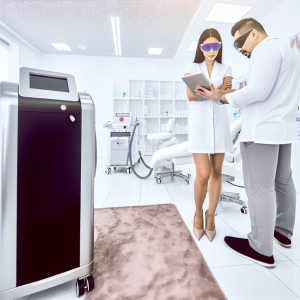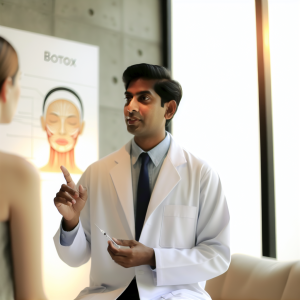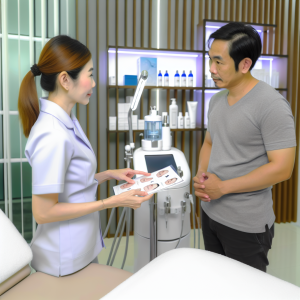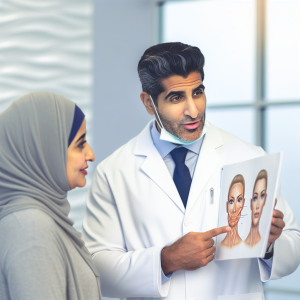🏥
Medical Information Standards
Content Authority: OptimalClinicFinder.com is a comprehensive medical directory platform connecting patients with qualified Coolsculpting providers. Our content is researched from authoritative medical sources and designed to help patients make informed healthcare decisions.
How CoolSculpting Works: Clinical Mechanism and Applications
CoolSculpting utilizes cryolipolysis technology, a scientifically-proven process that selectively targets and destroys fat cells through controlled cooling. The treatment works on the principle that fat cells are more susceptible to cold temperatures than surrounding tissues. When fat cells are exposed to precise cooling (typically 4°C to -5°C), they undergo apoptosis – a natural cell death process that leaves surrounding skin, muscle, and nerve tissue unharmed.
The cryolipolysis mechanism involves several key physiological processes: initial vasoconstriction, crystallization of lipids within adipocytes, inflammatory cascade activation, and macrophage-mediated clearance of dead cells. This multi-phase response occurs over 2-4 months, with the body naturally metabolizing and eliminating destroyed fat cells through the lymphatic system. Unlike weight loss, which shrinks fat cells, CoolSculpting permanently removes them, preventing future volume expansion in treated areas.
💡
Did You Know?
Clinical studies show that Coolsculpting patients achieve excellent results when combined with professional-grade aftercare products.
Clinical Research and Evidence Base
The clinical development of CoolSculpting involved multiple peer-reviewed studies published in leading dermatology and plastic surgery journals. Landmark research by Zelickson et al. demonstrated 22.4% fat layer reduction after single treatments, while Sasaki et al. showed sustained results at 6-month follow-up across diverse patient populations. These trials consistently showed high patient satisfaction rates exceeding 95% and minimal adverse events.
Histological studies have confirmed the selective nature of cryolipolysis, showing fat cell destruction without damage to surrounding dermal structures. Ultrasound and MRI imaging studies validate measurable fat layer reduction, with average decreases ranging from 15-25% per treatment session. Long-term follow-up data extending to 9 years post-treatment confirms permanent fat cell elimination and maintenance of results when patients maintain stable weight.
Treatment Protocols and Clinical Management
Successful CoolSculpting treatment requires thorough patient evaluation and customized treatment planning. The assessment process includes body composition analysis, skin quality evaluation, and realistic goal setting based on individual anatomy and expectations. Practitioners must identify appropriate treatment areas, determine optimal applicator selection, and establish treatment sequencing for multiple-area procedures.
Standard treatment protocols involve 35-75 minute sessions depending on applicator type and treatment area size. The CoolSculpting system offers various applicators designed for specific body regions: CoolAdvantage for abdomen and flanks, CoolMini for submental fat, CoolSmooth Pro for non-pinchable fat, and CoolFit for fitness enthusiasts. Treatment planning typically involves 1-3 sessions per area spaced 4-6 weeks apart, with comprehensive photography and measurements to track progress objectively.
💡
Quick Tip
Coolsculpting works best when combined with healthy lifestyle choices for optimal results.
Safety Profile and Risk Management
CoolSculpting demonstrates an excellent safety profile with over 8 million treatments performed globally. Common transient effects include temporary numbness, redness, swelling, and mild discomfort that typically resolve within days to weeks. These effects are consistent with the normal healing response and indicate proper treatment delivery.
Rare but serious complications include paradoxical adipose hyperplasia (PAH), occurring in approximately 0.0051% of treatments, and late-onset pain lasting several weeks. PAH appears as firm enlargement of treated areas and requires surgical correction. Risk factors include male gender, Hispanic ethnicity, and certain genetic predispositions. Proper patient screening, adherence to treatment protocols, and experienced practitioners minimize complication risks significantly.
Ideal Image CoolSculpting Cost Analysis and Financing Options
Understanding ideal image CoolSculpting cost structures helps patients make informed financial decisions about treatment investment. Pricing varies based on geographic location, provider expertise, facility overhead, and treatment complexity. Metropolitan areas typically command premium pricing due to higher operational costs and increased demand, while smaller markets often offer more competitive rates.
Most practices offer package pricing for multiple treatment areas, providing better value than single-session pricing. Financing options include medical credit programs like CareCredit, practice payment plans, and seasonal promotional pricing. Many providers offer complimentary consultations with detailed cost estimates based on individual treatment needs. Insurance rarely covers CoolSculpting as it’s considered cosmetic, making direct-pay arrangements the standard payment method.
Provider Selection and Treatment Access
Selecting qualified CoolSculpting providers is crucial for optimal outcomes and safety. Patients should verify provider credentials, including medical licensure, CoolSculpting certification, and aesthetic training background. Board-certified dermatologists, plastic surgeons, and trained nurse practitioners under physician supervision represent the gold standard for treatment delivery.
⚠️
Safety First
Always consult a qualified medical professional before starting Coolsculpting. Results vary by individual.
✓
Why Choose Coolsculpting?
●
Clinically proven
●
FDA approved
●
Minimal downtime
●
Long-lasting
Key selection criteria include facility accreditation, equipment maintenance protocols, before-and-after photo portfolios, and patient testimonial reviews. Reputable providers maintain comprehensive consultation processes, realistic expectation setting, and thorough aftercare support. The CoolSculpting University certification program ensures providers receive proper training, but patients should also evaluate clinical experience and aesthetic expertise when making provider selections.
Maximizing CoolSculpting Results and Long-term Outcomes
Optimizing CoolSculpting results requires patient compliance with pre- and post-treatment guidelines. Pre-treatment preparation includes maintaining stable weight, staying hydrated, and avoiding blood-thinning medications. Post-treatment care involves gentle massage, regular physical activity, and healthy lifestyle maintenance to support natural healing processes.
Long-term success depends on understanding CoolSculpting limitations and maintaining realistic expectations. The treatment reduces fat in targeted areas but doesn’t prevent weight gain in untreated regions. Patients achieving best outcomes typically combine CoolSculpting with comprehensive wellness approaches including balanced nutrition, regular exercise, and ongoing aesthetic maintenance treatments when appropriate.
Comparing CoolSculpting to Alternative Fat Reduction Methods
CoolSculpting offers unique advantages compared to surgical and non-surgical alternatives. Unlike liposuction, CoolSculpting requires no anesthesia, incisions, or downtime, making it suitable for patients seeking gradual, natural-looking improvements. Compared to other non-invasive technologies like radiofrequency or ultrasound, CoolSculpting provides more predictable results with extensive clinical validation.
Cost comparisons favor CoolSculpting for patients seeking moderate fat reduction without surgical risks. While surgical procedures may provide more dramatic single-session results, CoolSculpting offers comparable outcomes over multiple sessions with significantly reduced complication rates. The permanent nature of fat cell elimination provides long-term value compared to temporary treatments requiring ongoing maintenance sessions.
📚 Medical Authorities & Professional Standards
All Coolsculpting procedures should be performed by licensed medical professionals following established clinical guidelines and safety protocols.
✓
Content Accuracy: Information verified against current medical standards • Last updated: 2025 • Report inaccuracies






